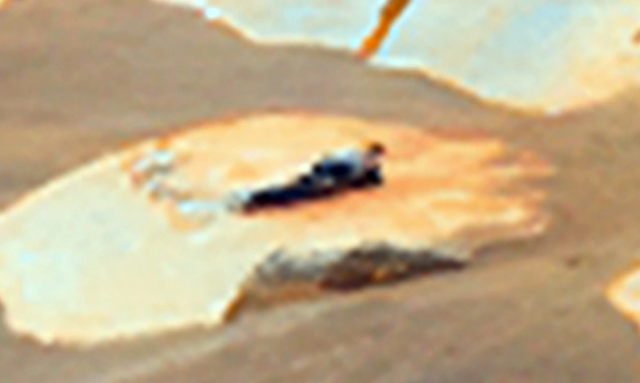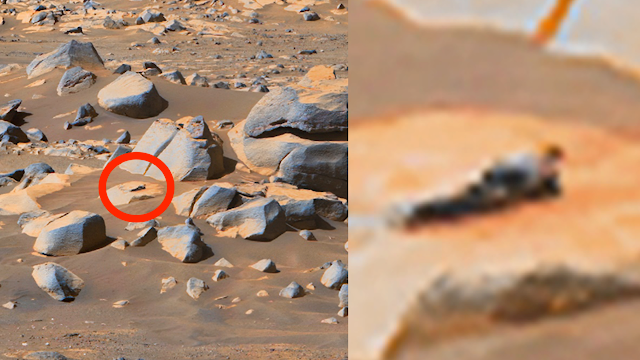‘Alien figure on Mars’: Why people are saying an anonymous piece of rock is proof of life on the red planet
‘Pareidolia’ has led to ‘mimetoliths’ being spotted on Mars – which is a roundabout way of saying that it is almost certainly a piece of rock

A piece of rock has ignited hope that it is actually a tranquil person hanging out on Mars – but it almost certainly isn’t.
But it is no scientific breakthrough or major find – instead, it is just a trick of the eye that has been used a number of times to get people excited about the possibility of life on the red planet.
The supposed sighting began on a blog, UFO Sightings Daily, written by Scott C Waring. In a large image originally sent back by the Mars rover in Last year, he claimed to have spotted a person lying down – with some people suggesting it was akin to the pose that Kate Winslet takes in Titanic when she is being drawn.
“Everyone here knows I love to comb through NASA photos,” wrote Scott C Waring in a post on his blog. “Well, I came across something unique...something that is 100% proof of intelligent life. There is a person laying down watching the NASA Mars rover from a safe distance away.
“The person is about 1 foot tall, .3 meters and is laying down, pinkish upper chest, neck and face, radish hair, wearing a dark suit, but has a grey object over one shoulder...looks like a backpack of some sort. There are even footprints behind the person leading up to the location they chose to lay down at.”

But while it is all but impossible to say for sure that the Mars rover hasn’t spotted an alien, the picture is far from 100 per cent proof of alien life. In fact, it is almost certainly just a trick of the eye.
That phenomenon is known as “pareidolia”, which describes the way that humans tend to see something meaningful in things that are in fact just arbitrarily arranged. People are given to seeing faces or other objects, even in the simplest and most unrelated things, whether on Earth or elsewhere.
Another related idea is that of mimetoliths. That specifically relates to rock formations that look like something else – something that sounds simple but has in recent times become a much practised pastime for some people.
Pareidolia and mimetolith is particularly prevalent on other planets, and one of the most famous examples is the “Man in the Moon”. That is presumably because the alien worlds as explored by rovers offer such a vast array of different objects, pictures from a variety of different angles, each of them an opportunity to spot something that can be seen as a human-made object.
For an example of just how many opportunities there are to spot something ostensibly exciting, it is worth referring back to the original panorama in which the image was taken. That photo – which can be viewed online at GigaPan, and was created by Neville Thompson – is huge, with a vast array of rocks, each of which is an opportunity to spot something that could be construed as exciting.
This phenomenon has led to something of a cottage industry of people who want to find aliens or other intriguing objects inside otherwise uninteresting pictures from other planets. Those claims – whether made genuinely or not – are then often promoted across different news sites, often under headlines that seem to give credence to the suggestion they could be anything other than an optical illusion.
Perhaps the most intriguing such find came in December, when China’s lunar rover appeared to spot a “mystery hut” on the Moon. The little rectangle at the top of the hill brought worldwide attention when it was spotted on the far side of the Moon.
It took the rover days to get closer to the object and find out what it was – and even longer to actually send back those messages, because of the difficulties with communication with Earth from the far side of the Moon. But when the pictures did come back, they were disappointing for anyone who thought the hut might be a house.
It was, in fact, a relatively uninteresting chunk of rock that scientists named “jade rabbit”, since close-up it looked more like the animal than a house, though it arguably looked like neither.
Join our commenting forum
Join thought-provoking conversations, follow other Independent readers and see their replies
Comments
Bookmark popover
Removed from bookmarks